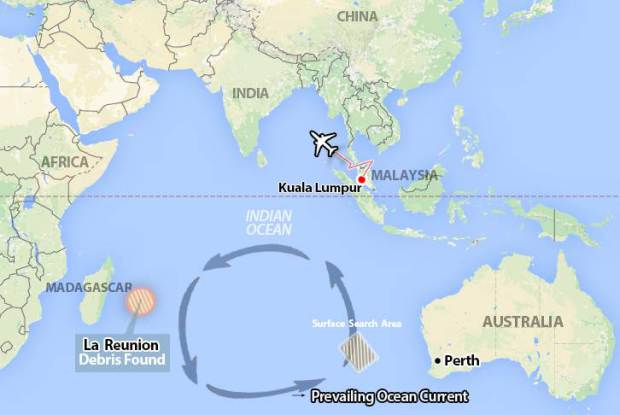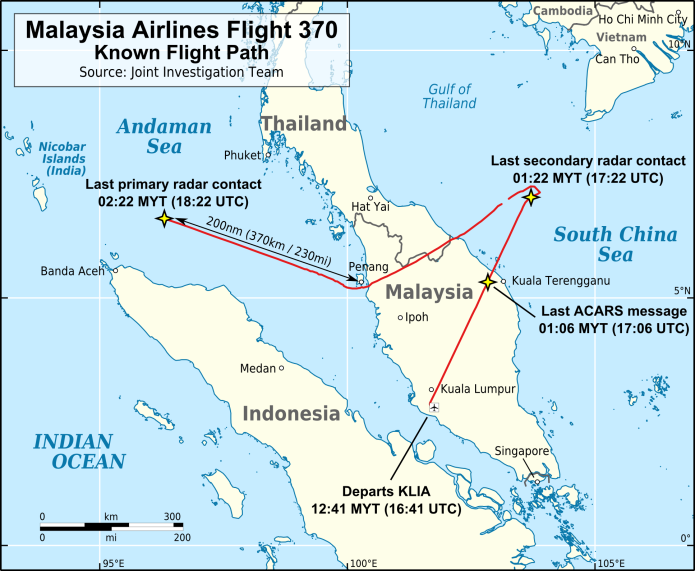




A single piece of debris recovered last July 29 on the beach at Saint-André Réunion, the sixth-largest commune on Réunion island, a French overseas department in the Indian Ocean situated east of Madagascar and about 175 kilometres southwest of Mauritius, the nearest island.
Almost two years after it vanished into thin air on March 8, 2014, the ongoing search for Malaysia Airlines Flight MH370, with 239 people aboard (227 passengers and 12 crew) remains perhaps the most incredible missing plane aviation story in history. To date all that has been recovered is its right-wing flaperon, bearing serial number 657BB, a control surface on the wing of the aircraft which was intended to help to stabilize the plane during low-speed flying during take-off and landing, combining the functions of flaps, used to create lift or drag depending on their use, and ailerons, which keep the plane from rolling over, and also help reduce weight. A technician from Airbus, which made the part for Boeing, formally identified one of the three numbers found on the flaperon as being the serial number from MH370.
As the whole world knows, Malaysia Airlines Flight MH370 took off from Kuala Lumpur after midnight Malaysia Time (MYT) on March 8, 2014 and the 200-tonne Boeing BA 777-2H6ER never made it to its 6:30. a.m. arrival in Beijing, disappearing from civilian radar over the Gulf of Thailand as responsibility was being handed from Malaysian ground control to Vietnam.
The closest parallel may be an Argentine military plane carrying 69 people that disappeared in 1965 and has never been found.
The Malaysia Airlines Flight MH370 disappearance is a story where arcane and specialist aviation terms moved far beyond the usual specialist nomenclature and proverbial “black box” flight recorder discussions.
Surely, we have left the realm of what now might be considered even the run-of-the-mill riveting aviation mystery and are now trying to solve the most enigmatic aviation puzzle the world has ever seen.
However, the Australian Joint Agency Coordination Centre (JACC) said Dec. 23 the search will conclude by about June.
More than 77,700 square kilometres of the sea floor have already been searched since the aircraft disappeared, making it the largest and most expensive aviation investigation in history.
“Consistent with the undertaking given by the Governments of Australia, Malaysia and the People’s Republic of China earlier this year, 120,000 square kilometres will be thoroughly searched. It is anticipated this will be completed around June 2016,” the JACC statement said.
Current search efforts continue to be focused along the seventh arc, a 2,160-nautical mile curve in the southern Indian Ocean, associated with the final “handshake” between the aircraft and the satellite ground station.
Two survey vessels – the Dutch-owned Fugro Discovery and its sister ship, the Fugro Equator – are currently deployed for the underwater search. The wide search area is a remote and previously unmapped area 1.1 million square kilometres in size and bathymetric survey work revealed water depths of up to 6,000 metres. The search area contains underwater mountains, crevasses, ridges and 2,000-metre sheer cliffs.
You can also follow me on Twitter at: https://twitter.com/jwbarker22